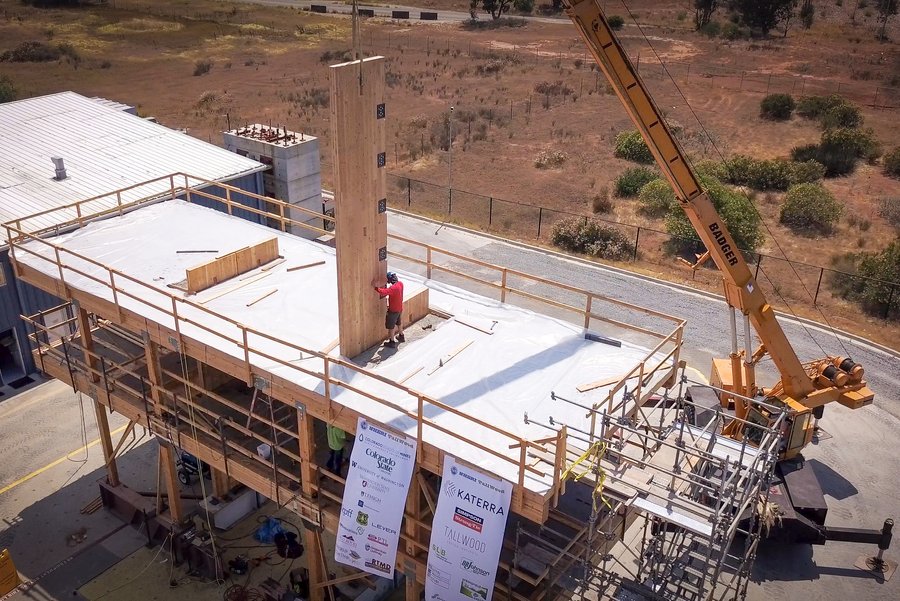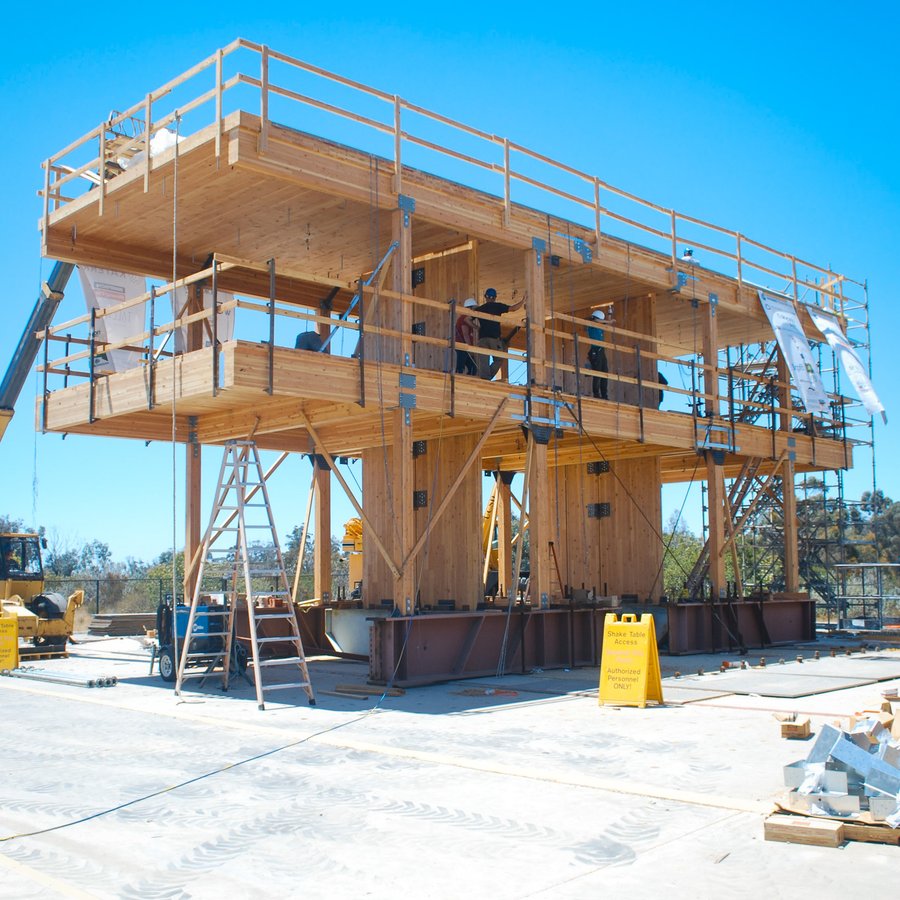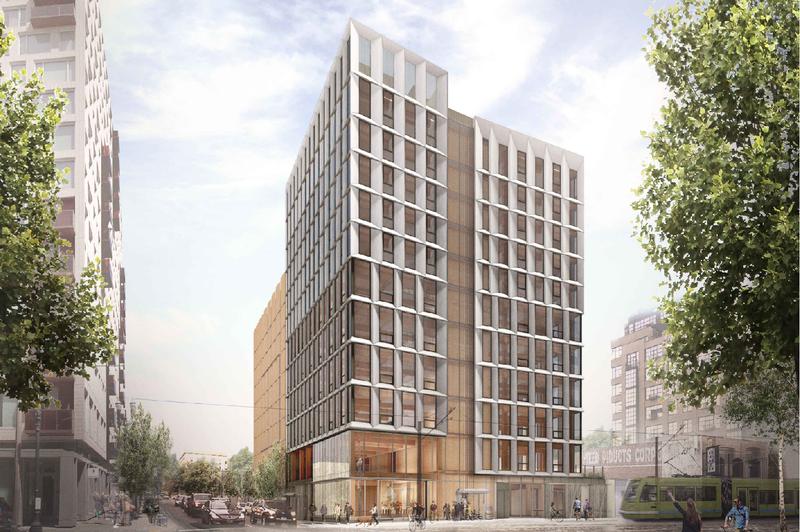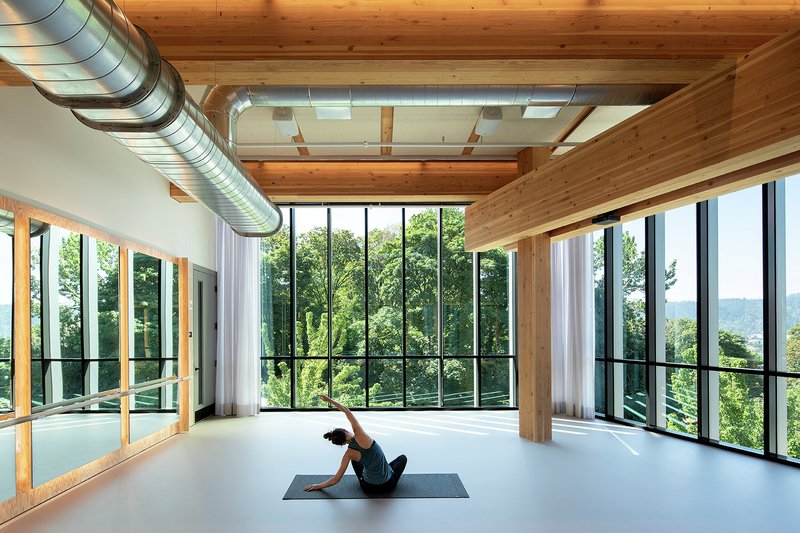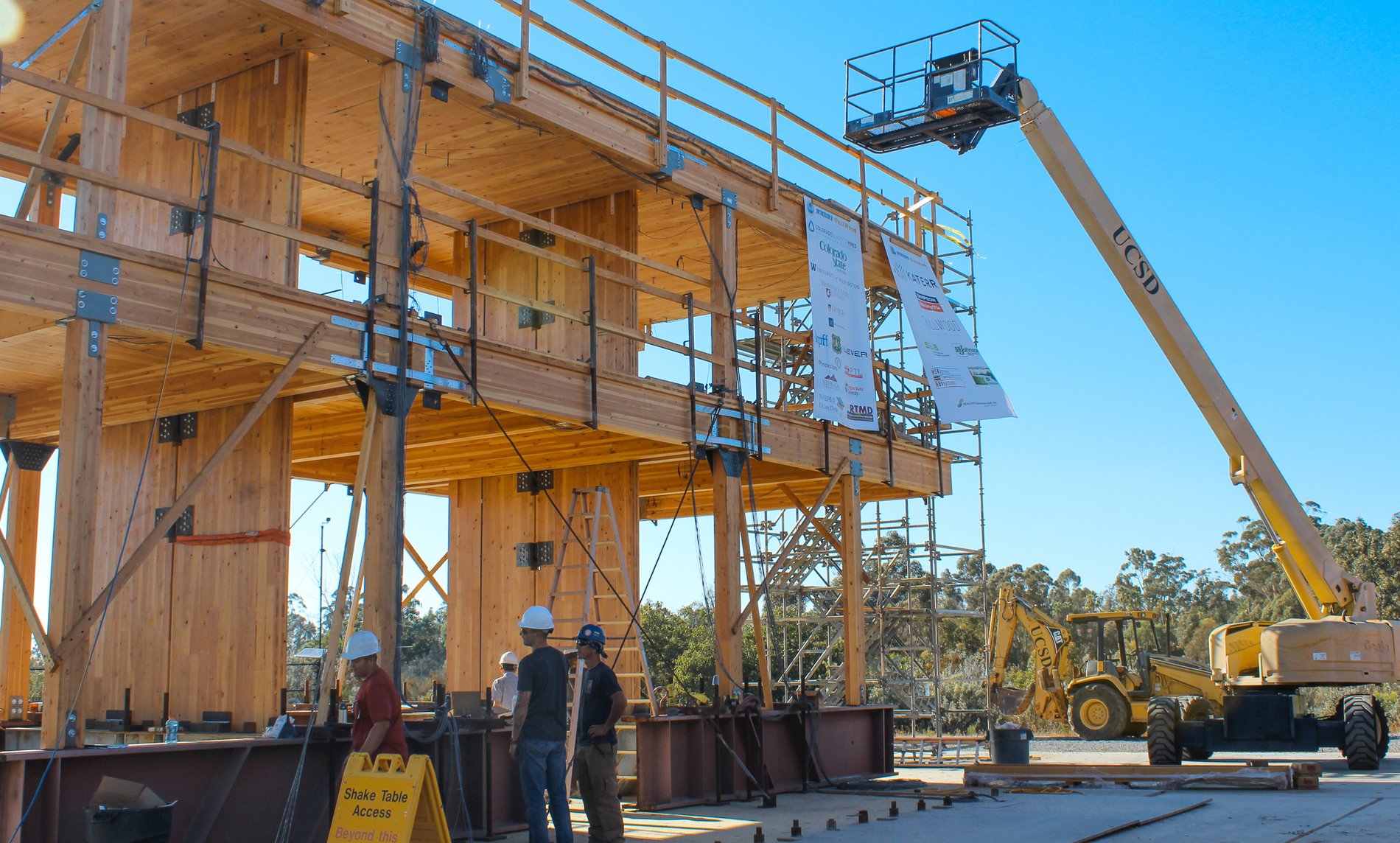
The NHERI TallWood Project is a research project funded by the USDA to study the seismic resiliency of wood structures. The multi-disciplinary research team includes dozens of university and industry collaborators from across the United States, working together since 2017 to develop and design a series of wood structure archetypes for seismic testing.
Inspired by ideas formulated at first during the design of Framework, the goal of this ongoing research project is to validate a resilient-based seismic design methodology for tall wood buildings. Prior research has shown that wood structures, when designed properly, have the potential to be more resilient than existing minimal design code requirements due to wood’s relative light weight and flexibility. These unique properties create the possibility for timber structures to not only be safe during an earthquake, but also to sustain less damage, which in turn allows wood structures to be reoccupied quickly after a seismic event.
As a project collaborator, LEVER designed multiple wood archetypes in partnership with KPFF Consulting Engineers. These archetypes provide a basis-of-design for six-story, 12-story, and 20-story resilient wood structures. In 2017, the research team constructed a two-story structure designed by LEVER that underwent full-scale seismic testing. This test provided valuable data about the the performance Cross-Laminated Timber (CLT) components including rocking walls, CLT panelized diaphragms, and wall-to-floor connectors. Read more about the two-story seismic test and its outcomes here.
In 2022, a 10-story version of the archetype will undergo full-scale seismic testing on an outdoor shake table facility at the NSF-funded NHERI experimental site at University of California, San Diego. This 10-story structure will be the world’s tallest full-scale wood building to be tested for seismic performance. Read our next post, NHERI TallWood Project 10-Story Seismic Test for more information.
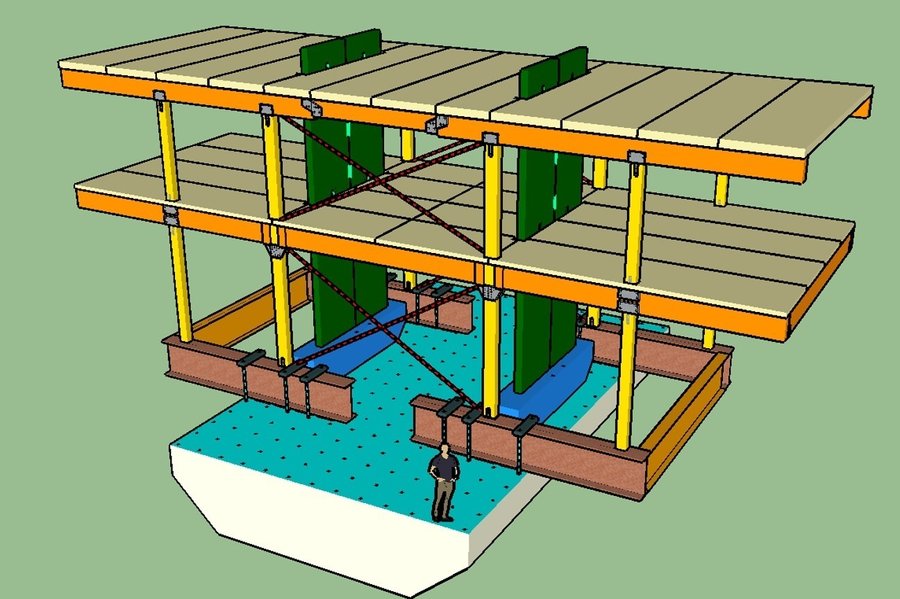
Three-deminsional model of a two-story mass timber building specimen tested on a shake table at the University of California, San Diego in 2017.
